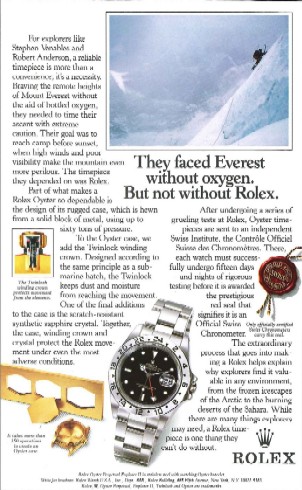Introduction
I have always been into divers' watches for as long as I can remember, but that doesn't mean other non divers' watches doesn't interest me. Just that when presented with a choice, I always end up picking the diver over the other.
As the years go by, I started to diversify my collection. I have been looking around for some variety and here are the tale of two travellers...
Last year, I stumbled upon a unique timepiece which has a respectable pedigree and amazingly its been under the radar considering the history and heritage it carries is something more than just a marketing gimmick. And most importantly, it is a unique feature that I have been looking around for, a 24 hour dial (the Breitling Cosmonaute is pricey). It's a remake of the very first original piece back in 1953 and produced in limited number of only 600 numbered pieces world wide. The watch in question is the Glycine Airman 1953 Vintage.
And recently, I have acquired a Rolex which I would never have considered previously as it was "small" at 40 mm. This Rolex is very much under the radar though it belongs to the sports model category like its Gmt Master, Submariner and Sea Dweller cousins. The popularity of this Rolex is amazingly low when one compares it with the other sports models, and that's a good factor as it keeps the price of this sports model affordable comparing to the others in the sports category. Introducing the black Explorer II 16570.

Here's a personal review of the two similar concept watches but with their own specialties...
I have always been into divers' watches for as long as I can remember, but that doesn't mean other non divers' watches doesn't interest me. Just that when presented with a choice, I always end up picking the diver over the other.
As the years go by, I started to diversify my collection. I have been looking around for some variety and here are the tale of two travellers...
Last year, I stumbled upon a unique timepiece which has a respectable pedigree and amazingly its been under the radar considering the history and heritage it carries is something more than just a marketing gimmick. And most importantly, it is a unique feature that I have been looking around for, a 24 hour dial (the Breitling Cosmonaute is pricey). It's a remake of the very first original piece back in 1953 and produced in limited number of only 600 numbered pieces world wide. The watch in question is the Glycine Airman 1953 Vintage.
And recently, I have acquired a Rolex which I would never have considered previously as it was "small" at 40 mm. This Rolex is very much under the radar though it belongs to the sports model category like its Gmt Master, Submariner and Sea Dweller cousins. The popularity of this Rolex is amazingly low when one compares it with the other sports models, and that's a good factor as it keeps the price of this sports model affordable comparing to the others in the sports category. Introducing the black Explorer II 16570.

Here's a personal review of the two similar concept watches but with their own specialties...
























 you for making the effort to provide the write up
you for making the effort to provide the write up 
Comment